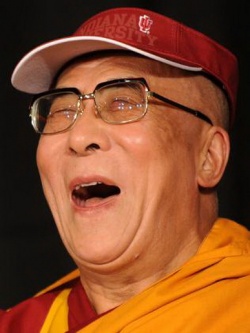Difference between revisions of "The Case of Dorje Shugden"
| Line 23: | Line 23: | ||
[http://www.american-buddha.com/cult.buddhanosmiling.1.htm www.american-buddha.com] | [http://www.american-buddha.com/cult.buddhanosmiling.1.htm www.american-buddha.com] | ||
[[Category:Deep corruption in the Tibetan Buddhist community]] | [[Category:Deep corruption in the Tibetan Buddhist community]] | ||
| + | [[Category:Corruption in the Tibetan Buddhist community]] | ||
Revision as of 06:54, 21 July 2013
Outsiders are used to thinking of Tibetans as united in solidarity behind the Dalai Lama on all issues, whether spiritual or political. How could they not be? We know the Tibetan leader for his gentle manner and engaging laughter, his patience and goodwill in the face of overwhelming power, and his generosity in spreading Buddhist teachings on nonviolence and compassion around the world.
But some Tibetans in exile have disagreed with the Dalai Lama on religious matters. The most famous example may be the dispute over worship of the tantric protector deity Dorje Shugden. "A Dharma Protector is an emanation of a Buddha or a Bodhisattva whose main functions are to avert the inner and outer obstacles that prevent practitioners from gaining spiritual realizations, and to arrange all the necessary conditions for their practice," say Dorje Shugden devotees. "In Tibet, every monastery had its own Dharma Protector, but the tradition did not begin in Tibet; the Mahayanists of ancient India also relied upon Dharma Protectors to eliminate hindrances and to fulfill their spiritual wishes." [1] As in practices for other dharma protectors, Shugden worship involves various rituals including chanted liturgies, ritual offerings, and visualizations.
And like other wrathful deities or dharma protectors, Shugden is scary, but with a purpose. "His round yellow hat represents the view of Nagarjuna, and the wisdom sword in his right hand teaches us to sever ignorance, the root of samsara, with the sharp blade of Nagarjuna's view... Dorje Shugden rides a snow lion, the symbol of the four fearlessnesses of a Buddha, and has a jewel-spitting mongoose perched on his left arm, symbolizing his power to bestow wealth on those who put their trust in him ... His wrathful expression indicates that he destroys ignorance, the real enemy of all living beings, by blessing them with great wisdom; and also that he destroys the obstacles of pure Dharma practitioners." [2] Nagarjuna was an Indian philosopher of the second or third century A.D. whose views on Buddhism were influential in Tibet.
Since the sixteenth century, monks in the Dalai Lama's own Gelug school of Tibetan Buddhism have performed rituals calling on the fearsome figure of Dorje Shugden to protect their spiritual practice and help them in worldly matters. The current Dalai Lama learned these practices from his junior tutor before fleeing Tibet in 1959. But beginning in 1976, the Tibetan exile leader started to discourage his people from supplicating Shugden, saying in part, that such practice would be harmful to the Nyingma order. Historically, Shugden practice was popular among lamas of the Gelug school ("Yellow Hats") who resisted mixing their school's philosophy and practice with those of other Buddhist schools, particularly the original Buddhism of Tibet, the Nyingma, as a traditional prayer to Shugden shows:
Praise to you, violent god of the Yellow Hat teachings,
Who reduces to particles of dust
Great beings, high officials and ordinary people
Who pollute and corrupt the Gelug doctrine. [3]
In exile; the Dalai Lama has said, all Tibetans need to unite in a common front against the Chinese. Shugden practice could be an obstacle to such unity, as it could alienate followers of schools outside the Gelugpa, particularly the Nyingma. Indeed, lamas of other schools often look cautiously on those who also follow Dorje Shugden, fearing that they might be Gelugpachauvinists. Therefore, on March 7, 1996, the Dalai Lama's exile government in India decreed a ban on Shugden practice. Of course, this writ did not carry the force of law, since India guarantees religious freedom in its constitution. But, like a Papal Bull among followers of the Catholic Church, the Dalai Lama's decree carried weight among Buddhist Tibetans, whenever they resided. After the ban, loyalists to the Dalai Lama echoed their leader in denouncing Shugden practice.
Longtime Shugden followers have denied that their tradition discriminates against the Nyingma or other Tibetan religious traditions. They took the ban as a blow to their religious freedom and the prelude to persecution. "I felt the ground slipping under my feet," said Kundeling Rinpoche (Rinpoche is a title of respect for high lamas), a leading Shugden practitioner. when he heard of the ban while traveling in Europe. "What followed was even more shocking -- the persecution of and propaganda against respected masters of the Dorje Shugden spiritual practice." An Indian reporter concluded that the ban had unleashed a backlash among Tibetans in exile. "Not only was Shugden worship forbidden by the Dalai Lama," the reporter wrote, "Shugden followers were subjected to a witch-hunt that has been well documented in the international media. The German television program 'Panorama' and the Swiss '10 Vor 10' have documented the human rights abuses by the Dalai Lama's administration -- the violence and even death threats against the practitioners of this particular Buddhist tradition and their ostracism." [4]
Another prominent Gelugpa lama practicing Dorje Shugden, Geshe Kelsang Gyatso, moved to England in 1977 and started his own organization, the New Kadampa Tradition, which developed a significant following among Westerners. In 1996, when the Dalai Lama banned Shugden practice, the New Kadampa broke off from the Dalai Lama's leadership and began to protest against the ban. Since then, on at least one occasion, the group was able to muster a large crowd of Westerners in monk's robes to protest at Heathrow airport when the Dalai Lama flew into London.
